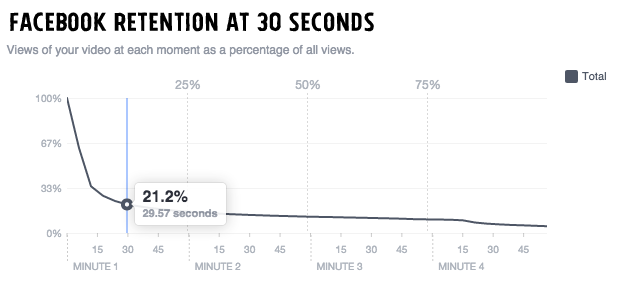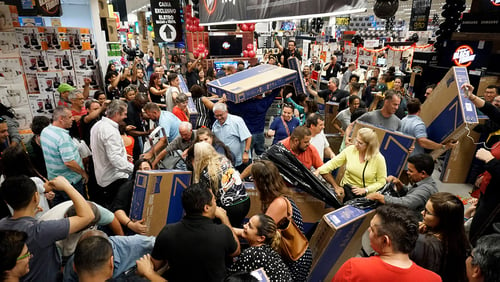The rise of Irish YouTubers - and the potential for brand opportunities

Posted by Lisa Sills
August 19th, 2015
When you think about it, YouTube is a funny old place. People sit in their rooms and film themselves doing stuff: shoving marshmallows in their mouths, electrocuting themselves, or talking their way through a beauty tutorial. It's a strange way to make a living. When YouTube launched, we doubt even the creators saw it taking off as it has.
But fast forward a decade and YouTube is soaring. The UK and US are chockfull of cross-over stars: Felix Kjellberg, Grace Helbig, Hannah Hart, Marcus Butler, Zoe Suggs…and on and on. They’ve all got books and hoodies and phone cases with their faces printed on them.
Walk into Easons and you’ll see the YA book section filled with their smiling faces. While you might think Ireland doesn't have any YouTube stars, you'd be wrong.
Who are the most subscribed Irish YouTubers?
For quite some time, OneyNG was the biggest Irish YouTube channel. A young Wexford man, Chris O’Neill or OneyNG, hasn’t uploaded a video in eight months and now spends his time working in Sleepy Cabin, a media studio that bears much of his signature style. Given his absence, O'Neill has been shoved down to a respectable fourth by a trio of gaming YouTubers.
A trend absolutely no one saw coming, ‘Let’s Play’ videos are now the bones of YouTube success. The number one most subscribed YouTuber of all time, the aforementioned Felix Kjellberg or PewDiePie, has almost 40 million subscribers and makes upwards of a million quid a year.
Jack Septic Eye, or Seán McLaughlin, is the Irish equivalent with 6 million subscribers. Behind him is David Nagle, aka Daithi de Nogla, and his pretty hefty 3 million subs. Both fall pretty squarely into the ‘Let’s Play’ category and spend their time shouting and roaring and making their subscribers laugh while they play games.
Nagle also uploads the occasional song and vlog, while McLaughlin sticks to games in a style he describes as a “sensory overload.” You'll either really love McLaughlin or really hate him.
While it all sounds very easy—upload yourself playing Minecraft for a bit and make millions—their success is calculated, with YouTubers investing in expensive equipment, editing software, and very purposely growing their presence online. It’s video marketing at its most authentic, and it’s the kind of exposure most brands can only dream of.
But is it all just gamers?
Nope. Gamers are a small part of it; they just happen to be very popular. Whole channels are dedicated solely to Minecraft. Somewhat inexplicably, channels with millions of subscribers are also dedicated to unboxing children’s toys.
YouTube is an odd place, but it’s full of brilliance—which is why it works. Plenty of marketers are quick to dismiss the platform, but that’s often because they don’t really understand it.
With nearly 3 million subscribers between their three channels, the Saccone Jolys are a marketing dream. An Irish family living in London, they vlog daily about their family life. Even their wedding and the birth of their children is up online.
On their personal channels, Anna Saccone talks beauty and fashion while Jonathan Joly focuses on fitness vlogging. The brand opportunities are endless, for brands with the right scope and budget.
But what about smaller budgets? Once you leave the top 20 most subscribed, the sub count tallies take quite a dip, and most of those Irish YouTubers make their money in their day jobs.
Many of these YouTubers clock in around the 50k subscriber mark, and make tidy money on the side from brand endorsements and media appearances. Clare Cullen, or Clisare, is a comedian and vlogger, most known for her Shite Irish Girls Say video. A staffer with the Irish Independent, Clare’s videos are made in between work—but that’s not to say she takes the mantle of YouTuber lightly.
She’s super engaged online, and the quality of her scripts and shooting are generally very solid.
Like Clare Cullen, Riyadh Khalaf is another part-time YouTuber growing a solid following—though his success has been more sudden, with several of his recent videos going massively viral. One such video where he asked his mam to read his Grindr messages on camera made it all the way to the front page of Buzzfeed.
In his daily life, Khalaf is a radio presenter.
While many brands and businesses dismiss YouTube as a fad or a fishbowl for narcissism, it very much offers real opportunities for brands and marketers.
Brands and marketers…tell me more
YouTube’s advertising model is often ignored by marketers, but it has one key strength many of its competitors don’t: advertisers can target people by their demographic. Use it right, and that’s a seriously powerful tool.
If you’re a brand who wants to advertise to millennials or Generation Z, your audience is sitting right there. People who actively follow and watch YouTubers are digitally savvy and completely tuned into the digital world. You can bet they have active social media platforms, and maybe vlogs and blogs of their own.
They are not a passive audience: they follow, buy, and connect. While we’re not suggesting that every brand grab a camera and put together a quick video, if you’re smart about it and make something great, your brand will see serious returns.
Product placements and brand reviews are another serious option, as well as YouTuber-based campaigns. If you’ve a product to get out there and your audience is young, getting in touch with YouTubers is an excellent opportunity.
It’s also not one that many Irish brands are taking up. Club Orange did a recent campaign with Irish YouTubers where they asked them to talk about their favourite things about Ireland, to tie in with the #bestbits campaign, but that's about it.
The campaign generated tidy profit and did wonders for Club Orange’s brand awareness. While an endorsement from Séan McLaughlin to his millions of subscribers won’t come cheap, there’s no reason why your brand can’t work and find success with the myriad smaller but still popular YouTubers.
But what about Facebook video?
If you’ve been on Facebook, you’ve probably heard of Cian Twomey. You won’t find him on YouTube, but on Facebook he’s a superstar. With two million likes on his page, Twomey’s videos are uploaded natively to Facebook and often clock in hundreds of thousands to millions of hits.
A recent video spoofing Pretty Little Liars has 14 million views and over 350k shares. The 21-year-old Cork native is a big deal, and certainly makes the case for Facebook video. But is it possible to make a living off Facebook? Yes, as it so happens, as Twomey quit his job not long after hitting one million likes and is now a full-time comedian.
Twomey’s ultimate goal is a TV show, and given his massive following, it’d be no surprise if RTE snapped him up like they did with Damo & Ivor and the Rubberbandits.
Twomey’s success does beg a question: should brands focus on YouTube AND Facebook? Or is it a case of one or the other? Ask Facebook and they’ll tell you they’re streaming more video than YouTube, but a direct comparison gets complicated fast.
Hank Green, of YouTube empire the Vlog Brothers, wrote a scathing piece about Facebook’s approach to video on Medium and raised some excellent points. Namely:
- Facebook favours natively uploaded content—which, of course they do. It’s Facebook’s algorithm and they want to grow video for digital creators there so it’s no surprise that their algorithm far favours videos uploaded natively instead of videos linked to from YouTube.
- Many Facebook users are stealing and ripping off content without citing any kind of attribution. Copyright infringement is the norm for Facebook.
- Facebook counts a view at 3 seconds—but with autoplay or disinterest, it’s not unusual for 80% of viewers to have fled the video by the 30 second mark.


Which is the better option? Right now, there is no solid answer. Videos rarely go viral on YouTube. It’s other platforms that help them take off: it’s mentions in online media, or traditional media, or shares on social media. Facebook comes with that in-built ability for virality.
But that isn’t to say that one platform is better than the other. With every campaign, it really depends. However, if Facebook are as determined as they seem to be to help video and digital creators like Cian Twomey take off, then it could very well become a real competitor to YouTube.
But hey, a little competition never hurt anyone!
But back to YouTube…
For a smart brand, YouTube represents a pool of new possibilities. Whether you decide to use it as an advertising platform, for brand opportunities, or to make and grow a channel of your own, there are hundreds of millions of very active people in the 13-34 demo spending huge amounts of time on YouTube.
If you’d like to create a YouTube campaign of your own, get in touch and we'll make it the best it can be. In the meantime, follow us on Facebook, Twitter, and Pinterest to keep up with all things content and digital media.

Lisa Sills

Previous Post
Enter Panda 4.2: What does Google’s new update mean for you?
Next Post

Duplicate content: How to handle the digital doppelgänger
Subscribe Here
You may also like...
Nicole Thomsen | Dec 11, 2023
Nadia Reckmann | Nov 23, 2023
Nicole Thomsen | Nov 6, 2023





